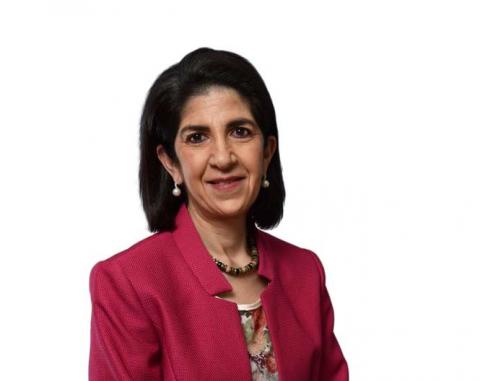It was a pleasure to see so many of you in the Main Auditorium last Wednesday for the Director-General’s traditional January presentation to personnel. As last year, my fellow Directors helped me cover an impressive spectrum of activities and accomplishments. For those who were unable to attend, or who would like to review the presentation, you can find it here.
Last year was a truly remarkable one for CERN, and I am looking forward to another great year in 2017. I have already spoken at length about the fabulous achievements of 2016 across the whole range of the Organization’s activities: the superb performance of the accelerator complex and of the LHC experiments and computing, the progress towards the High-Luminosity LHC, the good results from our compelling and varied scientific diversity programme, and the developments towards the future through design studies for future facilities and accelerator R&D efforts. We have also made excellent progress in geographical enlargement and in securing financial support for our projects and activities. I will not dwell any longer on 2016 here.
Turning now to 2017, our objectives are exciting and ambitious in all the domains of the Organization’s engagement. Here I will limit myself to a few examples. It will be an important year for the LHC high-luminosity upgrade, with construction and testing of the first full-length prototypes of both the 11-Tesla dipole and the inner-triplet quadrupole. Tenders for civil engineering at points one and five will be issued this year for adjudication in 2018 and execution during LS2. The year will also see the production of several Technical Design Reports for the Phase-2 upgrades of ATLAS and CMS. The non-LHC programme is also marked by several important milestones: the commissioning and operation of the third HIE-Isolde cryomodule, the connection of the GBAR experiment to ELENA’s new antiproton deceleration ring, the completion of the ICARUS modules at the CERN Neutrino Platform and their shipment to Fermilab (where they will take part in the short-baseline programme as of 2018), the commissioning of the AWAKE electron beam line, and many more. Preparations for CERN’s future (including CLIC, the FCC study, the Physics Beyond Colliders working group and accelerator R&D work) will progress at full speed to meet the deadline of the end of 2018 to submit reports as input for the update of the European Strategy for Particle Physics.
Moving away from scientific and technical aspects, another important development to look forward to in 2017 is the launch of a new CERN Alumni programme. This initiative presents a great opportunity for former CERN personnel of all categories, including users, associates, students and fellows as well as staff, to stay engaged with CERN. The programme will create a network of ambassadors to promote the core values of our Organization, including the importance of fundamental research, peaceful collaboration, open science, and the broader benefits to society that accrue through CERN’s work. It will also provide help and guidance to the younger generations, in particular young people looking for jobs outside research. More details of the scheme are covered in the article in this issue of the Bulletin newsletter.
I’d like to end this message as I ended my talk on 11 January: with the Code of Conduct. CERN’s success is built on its great values, high among them respect. Our Organization was founded on the ideal of mutual respect between diverse nations and individuals. As we continue to grow, and our diversity continues to increase, it’s important to remember that ideal. Respect generates respect, and a respectful workplace is one where everyone can give their best both from the professional and human viewpoints.


